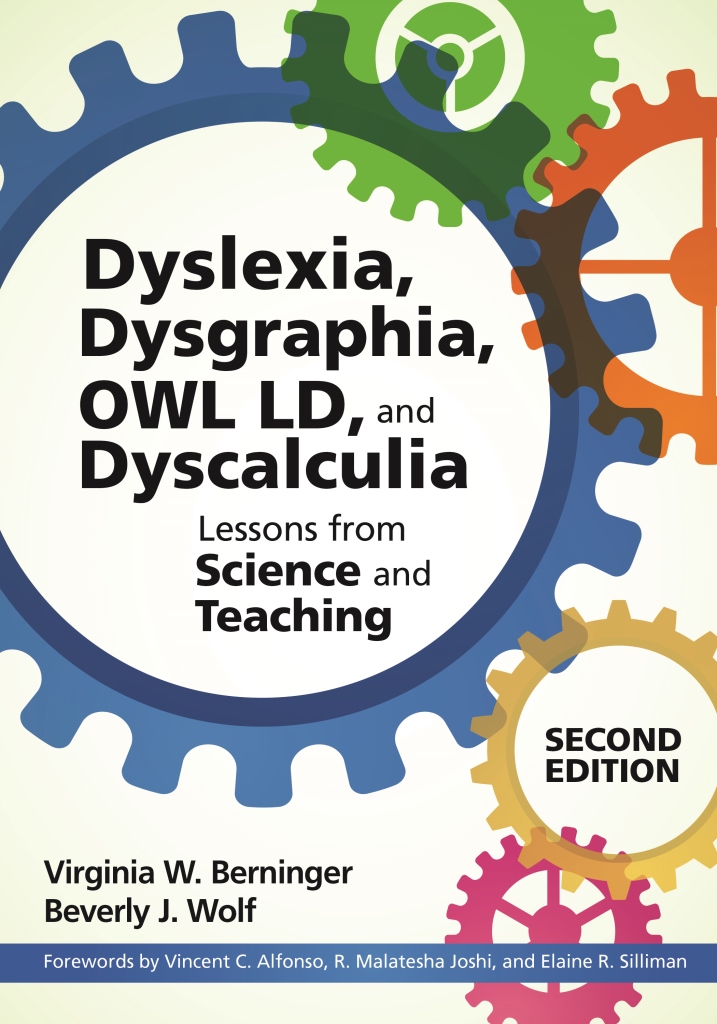 October is Dyslexia Awareness Month, a time to share resources, success stories, and practical tips and strategies in support of children and adults with dyslexia. In honor of this nationally recognized monthlong event, we’ve put together a list of 8 insightful quotes on effective instruction for students with dyslexia. Ready to share with fellow educators, these quotes were excerpted from the book Dyslexia, Dysgraphia, OWL LD, and Dyscalculia, Second Edition, by Virginia W. Berninger & Beverly J. Wolf. They’re important reminders of some basic things every educator can do to teach students with dyslexia and increase their confidence and their chances for success. (For more guidance and strategies, check out the book and the recommended resources at the end of this post!)
October is Dyslexia Awareness Month, a time to share resources, success stories, and practical tips and strategies in support of children and adults with dyslexia. In honor of this nationally recognized monthlong event, we’ve put together a list of 8 insightful quotes on effective instruction for students with dyslexia. Ready to share with fellow educators, these quotes were excerpted from the book Dyslexia, Dysgraphia, OWL LD, and Dyscalculia, Second Edition, by Virginia W. Berninger & Beverly J. Wolf. They’re important reminders of some basic things every educator can do to teach students with dyslexia and increase their confidence and their chances for success. (For more guidance and strategies, check out the book and the recommended resources at the end of this post!)

Recognize individual needs. “Serving students with dyslexia in the general education program requires that the entire staff recognizes the individual needs of each student.”

Make teaching relevant to student interests. “Linking instruction in basic reading, writing, and oral language skills to their interests and to intellectually engaging content helps students with dyslexia sustain hard work over time.”

Give opportunities for repeated practice. “Students with dyslexia may need more repeated exposures and practice than other students. Repeated practice over time often is needed to acquire mastery and confidence.”

Look for teachable moments. “Teachers should be prepared to take advantage of any teachable moments during the school day to develop oral vocabulary, listening skills, and other language concepts related to oral language comprehension and expression.”

Recognize the role of joy and engagement. “Although some teachers may feel they are not equipped to teach reading and writing to students with dyslexia, they are probably very capable of providing intellectual engagement and joy in learning, which are equally important.”

Understand and appreciate effort. “Students with dyslexia appreciate teachers understanding how much effort it may take for them to learn to process, pronounce, and spell written words compared with their classmates.”

Celebrate problem-solving skills. “Teachers should acknowledge and celebrate evidence of thinking and problem-solving ability in students with dyslexia.”

Be confident that you’re building a strong foundation for adulthood. “Research on adult outcomes has shown that many individuals with dyslexia become successful adults, especially if they had family and other social supports along the way.”
MORE ON DYSLEXIA
BOOK EXCERPT: Dyslexia, Dysgraphia, OWL LD, and Dyscalculia. Excerpted from the book behind today’s blog post, this chapter discusses the use of technology in teaching students with dyslexia, dysgraphia, OWL LD, and dyscalculia. Get insights on the use of computers for content area instruction, accommodations, and explicit instruction. READ NOW
WEBINAR: Identify Dyslexia Using TILLS. Discover how to use the Test of Integrated Language and Literacy Skills (TILLS) to decide whether a school-age student’s (ages 6-18 yrs) TILLS profile is consistent with a diagnosis of dyslexia. WATCH NOW
BLOG POST: Supporting Students on the Path to Disability Pride. How can you best support students with “invisible disabilities” like dyslexia on their path to pride and empowerment? This blog post gives practical suggestions, adapted from the guidebook Empowering Students with Hidden Disabilities by Margo Vreeburg Izzo & LeDerick Horne. READ NOW
SCREENER SLIDESHOW: SLS. Get an inside look at the Student Language Scale (SLS), a reliable way to screen students ages 6–18 years for language/literacy disorders, including dyslexia. Filled out by parents, teachers, and students, the screener is a quick, cost-effective way to see how students are performing on academic tasks as compared to their same-age peers. SEE THE SLIDESHOW

Dyslexia, Dysgraphia, OWL LD, and Dyscalculia, Second Edition
How can teachers provide effective instruction for students with learning disabilities while meeting the needs of all students? The first teacher training text to cover all four learning disabilities that require differentiated instruction—dysgraphia, dyslexia, dyscalculia, and oral and written language learning disability (OWL LD)—this book prepares educators to deliver explicit and engaging instruction customized to the needs of their students. Critical insights from diverse fields blend with lessons learned from actual teaching experience, making this an ideal preservice text and a great in-service professional development tool.
Stay up to date on the latest posts, news, strategies, and more!
Sign up for one of our FREE newslettersMore posts like this

17 Ways to Improve Your Students’ Oral Language Skills
June 5, 2024
3 Essential Principles for Dyscalculia Intervention
June 29, 2020


Write a Comment
Your email address will not be published. Required fields are marked *
Post a Comment